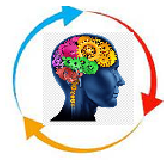Performance Management KPIs
Most organizations today do not have the necessary up-to-date KPIs that measure their workforce readiness. This has been identified as one of the major hurdles HR executive face today.
HR today needs KPIs that address their importance to the overall company strategy, goals and decision-making at the executive level. They lack the means to leverage evidence needed that clearly illustrate their contribution to the growth and success of the organization.
To help executives as well as employees embrace the use of performance-related KPIs and motivate them to change, you need to deploy a performance management system designed along these lines that is consistent, transparent, and simple to use.
WorkforceAI provides C-Suite and CHRO executives the KPIs that matter in understanding the value the HR department brings to the organization. These KPIs are not generally provided by current HR systems and are challenging to determine.
Our approach, driven by AI agents, follows this simple but effective method :
a) Determine strategy, objectives and quantifiable goals
b) Collect and organize public and company in-house data along these lines
c) Evaluate and report on workforce achievements
d) Repeat the process.

Key Metrics for Better HR Decisions
Here is a summary of the main metrics collected and organized for the company's management team as they relate to HR :
Company Performance: A high-level comparison of how well employees are performing versus how engaged and valued they feel.
Employee Performance: You can track employee performance through self-assessments, peer reviews, manager assessments, or a combination of all three.
Goal Tracking: If your performance management software includes goal tracking, you can see the goals employees and team leaders have set, how these goals connect to larger company goals, and the progress employees have made.
Performance and Potential: The data-intensive model that allows team leaders to categorize employees according to their performance and potential levels for better succession and leadership planning.
Revenue per Team: The total revenue divided by the total number of employees in a team over times.
Revenue per Employee: The total amount of revenue divided by the total number of employees.
People Skills, Productivity and Revenue Growth
People skills are the life blood of an organization. Skills, however, are not a static entity as they change with new technology rollouts.
Hard skills like coding are important, but of growing importance also are soft skills like : communication, collaboration, empathy and a slew of such factors. These skills are known to contribute to development of leadership of people in an organization.
Metrics that include measures of these components are what executives, who are tasked to make tough decisions, need to guide them through the process. It is a continuous endeavor to maintain competitiveness and sustainability.
Start early so you get the advantage of seeing trends of data collection over a longer period..
Contact Us
Call us today to inquire more about how our unique methodology can help you cut the loss of productivity, reduce time-to -market and speed up your IT Transformation.
